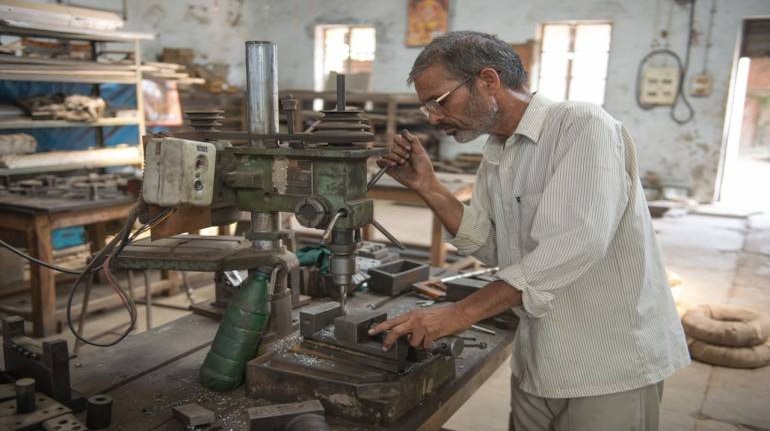Representative image (Source: Shutterstock)
The central government has set aside Rs 7.50 lakh crore as capital expenditure in the Union Budget for FY 2022-23, a 35.4 percent jump when compared to FY 2021-22, Finance minister Nirmala Sitharaman said today in her Budget speech.
Sitharaman added that the effective capital expenditure of the central government is estimated at Rs 10.68 lakh crore in 2022-23, which is about 4.1 percent of GDP.
Story continues below Advertisement
The Rs 10.68 lakh crore allocated for 2022-23 is 27 percent higher than the revised estimate of Rs 8.4 lakh crore spent in 2021-22.
The Centre has projected growth at 8% to 8.5% compared with an estimated 9.2% for the current financial year and a 6.6% contraction the previous year.
The government is betting big on public capital expenditure to pump the investment cycle and spur India’s economic recovery from the pandemic through 2022-23.
The move by the government is not only expected to increase opportunities for private companies to participate in infrastructure projects such as new roads and highways, and railways but will create opportunities in other social welfare sectors like drinking water projects which was allocated Rs 60,000 crore and housing projects with an allocation of Rs 48,000 crore.
The capital spending push will also induce demand for services and manufactured inputs from large industries and micro, small and medium enterprises (MSMEs), while helping farmers through better infrastructure.
“The economy has shown strong resilience to come out of the effects of the pandemic with high growth. However, we need to sustain that level to make up for the setback of 2020-21,” Sitharaman said.
The Indian industry has welcomed the higher allocations by the government for capital expenditure and has said that the government's initiative is likely to boost economic recovery after the COVID-19 pandemic.
“The Union Budget for 2022-2023 underscores the Indian Government’s previous emphasis on capital expenditure to sustain the near-term recovery from the pandemic, while simultaneously paving the way for longer-term restructuring of the economy,” said Christian de Guzman, senior vice-president, Sovereign Risk Group, Moody’s Investors Service.
Similarly, Sunil Duggal, Group CEO, Vedanta said that the government's thrust has been to allow public investment to take center stage so that private investment can follow suit.
"The sizeable capital expenditure will also have a multiplier impact on the economy as it will create not only assets but also large-scale employment opportunities and lead to higher demand for manufactured goods by both large industries and MSMEs," Duggal said.
Manish R Sharma, Partner and Leader - Capital Projects & Infrastructure, PwC India said that besides efficient planning and usage of technology, the initiative of capacity building of agencies will be a critical element of realising the impact of Gati Shakti.
He added that the Budget for 2022-23 also sets the course for more collaborative play with states in infrastructure creation through a seven-fold increase in capital allocation to Rs 1 lakh crore.
However, it also underlines the need for states to invest in capacity building for project preparation if they have to gain maximum benefit, Sharma said.



